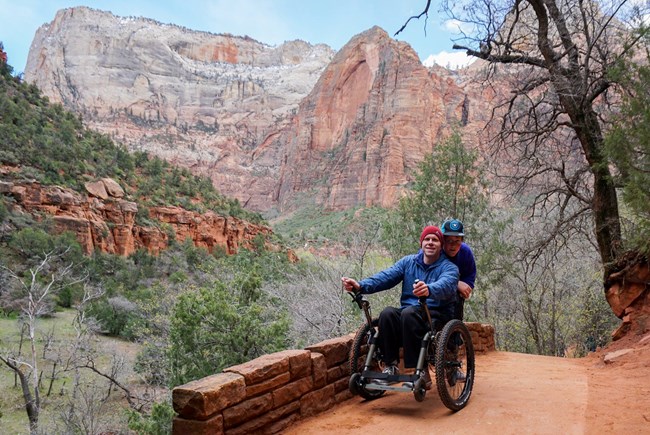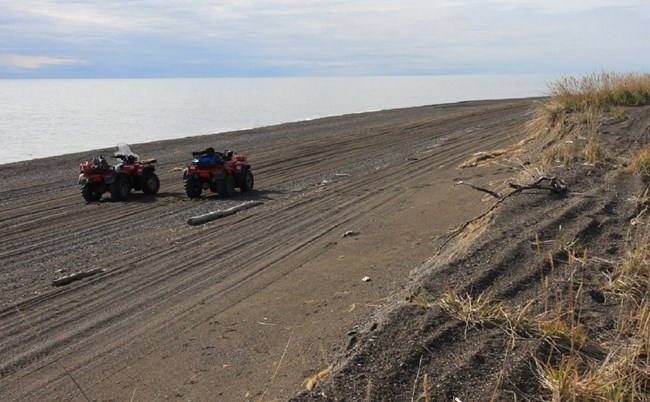
Courtesy Dave Gillespie
Wheelchairs and Mobility Aids
Many kinds of devices improve mobility for the 1-in-4 Americans with a disability; from walkers, canes, crutches, or braces to traditional manual or power wheelchairs to off-road mobility wheelchairs or electric scooters.
The Americans with Disabilities Act (ADA) definition of a wheelchair (Title V Section 508c) is: a manually-operated or power-driven device designed primarily for use by an individual with a mobility disability for the main purpose of indoor or of both indoor and outdoor locomotion.
Mobility device technology has come a long way in recent years, spanning a variety of shapes, sizes, and capability in varied terrain. Those devices that meet the definition of a wheelchair are allowed anywhere foot travel is allowed in our National Parks, this includes the opportunity to participate in Wilderness experiences.
NPS Photo
Other Power-Driven Mobility Devices (OPDMDs)
Any mobility device powered by batteries, fuel, or other engines, that is not primarily designed for individuals with disabilities, that are used by such individuals for the purpose of locomotion are classified as an Other Powered-Driven Mobility Device (OPDMD).
OPDMDs examples include golf cars/carts, electronic personal assistance mobility devices, such as the Segway ® Personal Transporter (PT), or any mobility device that does NOT meet the definition of a wheelchair and is designed to operate in areas without defined pedestrian routes.
Mobility Device Loan Programs
Some parks have mobility devices available for loan for use on beaches and trails. Below is a map and a list of parks with these programs.Alaska
Lake Clark National Park and Preserve: beach wheelchair
Arkansas
Arkansas Post National Memorial: all-terrain manual wheelchair
California
Golden Gate National Recreation Area: beach wheelchair
Channel Islands National Park: beach wheelchair
Point Reyes National Seashore: beach wheelchair
Redwoods National & State Parks: track chair
Colorado
Great Sand Dunes National Park: beach wheelchair
Rocky Mountains National Park: all-terrain manual chair
Florida
Canaveral National Seashore: beach wheelchair
Gulf Islands National Seashore: beach wheelchair
Georgia
Cumberland Island National Seashore: beach wheelchair and track chair
Kennesaw Mountain National Battlefield Park: track chair
Hawaii
Puʻuhonua o Hōnaunau National Historical Park: beach wheelchair
Indiana
Indiana Dunes National Park: beach wheelchairs and other devices
Maine
Acadia National Park: beach wheelchairs
Maryland
Assateague Island National Seashore: beach wheelchair
Massachusetts
Cape Cod National Seashore: beach wheelchair
Michigan
Sleeping Bear Dunes National Lakeshore: beach wheelchair and track chair
North Carolina
Cape Hatteras National Seashore: beach wheelchair
Cape Lookout National Seashore: beach wheelchair
New York
Fire Island National Seashore: beach wheelchair
Gateway National Recreation Area: beach wheelchair
Oregon
Lewis and Clark National Historic Park: scooter and a wheelchair
South Carolina
Congaree National Park: beach wheelchair
Tennesee
Great Smoky Mountains National Park: all-terrain manual chair
Texas
Padre Island National Seashore: beach wheelchair
Virgin Islands
Virgin Islands National Park: beach wheelchair
Wyoming
Yellowstone National Park: beach wheelchair
Last updated: August 11, 2025
